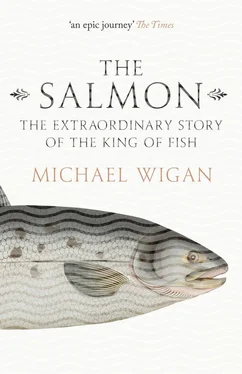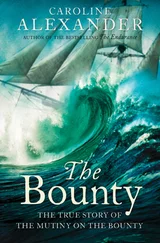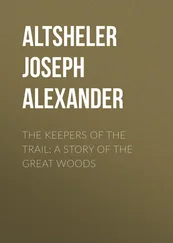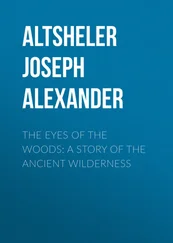The most important salmon-netting haul in modern times was taken off Greenland. It commenced in 1959 when gill-netters working the fjords were startled to find glittering salmon in the mesh. A boom in salmon commenced, which pulled in drift-net fishers close to Greenland’s western shore from Denmark, the Faroes and Norway. The working season was August to October, with the winter iced over. Catches rocketed, peaking at 2,689 tons in 1971. All of a sudden salmon, which are a rare fish in the sea, were being caught like mother cod, which can lay millions of eggs. The International Council for the Exploration of the Sea (ICES) reckoned the Greenland operation in winter 1972 had removed a third of all the salmon locally present. As more attention was paid to what exactly was being caught the fish were traced to the east coast of America and Canada and, secondly, older female salmon from Scotland.
Something had to be done. The solution was devised by an Icelander called Orri Vigfusson, who is now a household name in salmon conservation. A partner in a herring fishing family that hit hard times when herring runs shifted, Vigfusson was familiar with the vagaries of fishing. Basically in sympathy with remote communities eking out precarious existences, Vigfusson saw that in order to endure the solution had to be fair. An international arm was needed to lend support and the quotas discussed at the negotiating table were assembled by the North Atlantic Salmon Conservation Organisation (NASCO), a multi-member body formed in 1984.
Encouraging alternative fisheries for the Greenlanders, and with striking success raising money all across salmon range, Vigfusson made his breakthrough leasing arrangement in 1993. The Greenlanders were not sold down the river – far from it. Their argument that the salmon fattened off their coast was accepted. The payment could be seen as a grazing fee. They were paid to abstain from their rightful fishery, beyond a small permitted tonnage for ‘subsistence’. No salmon could be exported.
The agreements have had to be regularly renewed and reassessed, a lack of finality seen by their critics as a weakness. There have been teething troubles. Greenlanders with limited opportunities for economic activity have exceeded quotas. Annual payments have been withdrawn, and then reinstated when malpractices have been straightened out. The way may have been tortuous, but it has succeeded.
A similar arrangement was reached with the Faroe Islanders, who had been shown how to catch salmon on baited long lines by Danish fishermen from the island of Bornholm who had perfected this art in the Baltic. By 1991 Vigfusson had clinched an agreement with the Faroese, made easier because the Icelandic government already had fisheries access arrangements to their seas with their closest neighbours. The Faroese were the only foreign fishermen allowed to catch Icelandic fish.
Vigfusson had shown how to raise money for salmon protection and how to broker international agreements on a new basis. Tirelessly he had circuited the salmon world, flying from one event to the next, rattling in buses round the bumpy roads on the Greenland coast, meeting one fishing community after another, making addresses and hosting fund-raisers, coming up with ideas for alternative employment, patiently arguing and negotiating. People had faith in his integrity and un-deflected purpose. He crossed national divides and came from a neutral country carrying no historical baggage. Salmon conservation using his model took a mighty stride.
Today there are still anecdotal tales, usually involving Spanish trawlers playing fast and loose with everyone and everything, but in the main salmon netting has being progressively removed as a major factor in European salmon decline.
Anglers knew they had to join the effort to restore the bountiful fish. Inducted in its virtues by an American salmon community almost completely stripped of their iconic east-coast visitor, and championed by the charismatic Alaskan-born angler and conservationist, Lee Wulff, who coined the memorable phrase ‘Gamefish are too valuable to be caught only once’, ‘catch and release’ was introduced to UK anglers around 2005. Since that time it has taken off. The fish is brought to the landing-net as fast as possible, revived by allowing the lungs to re-fill with oxygen, and let go when the body is properly horizontal in the water and the tail-movement quickens.
Talked of and practised by individual anglers for at least a century, especially when the salmon was late-season and coloured, catch and release took a formal position in salmon management relatively lately. Now it applies to fresh salmon in mint condition, not only coloured flabby ones.
Scotland’s Aberdeenshire Dee broke the mould and made catch and release compulsory all season in an unprecedented announcement that caused a mighty stir at the time. But it was done. Other rivers followed suit with milder variations on the theme. Some salmon were allowed to be killed ‘for the pot’ at times of year when runs were bountiful, and restrictions on numbers of fish allowed to be killed were applied to sensitive parts of the run, typically the early spring.
The result? Were there more shoals of salmon pushing the tide up the banks as they swarmed into those waiting river-mouths? Hell, there were! The decline persisted.
It was against this background of dwindling stocks that SALSEA girded its loins to find out what was happening in the part of the salmon zone that remained an almost total mystery – saltwater.
The background to this mystery was not only a fish that was doing a vanishing act, it was climate change. The north-eastern Atlantic, where many European salmon wintered, was warming. No thermometer was needed to discover this. Surf anglers on the north coast of Scotland’s desolate extremities threw their spinning lines baited for cod and hooked sea bass. Previously sea bass had not been caught further north than The Wash in south-eastern England. Exotic fish were dragged up in trawlers all the way to Iceland. Red mullet and sea bream edged up the latitude line. Coral reefs crumbled in unfamiliarly warm waters. Disc-shaped sunfish, previously only ever seen, and then rarely, off the south coast, were hauled onto boats far up the coast of Britain. From sardines to whales, fish moved northwards. Smolts were not immune; their pathways adapted too.
Oceanographers confirmed it: the North Atlantic was warming. For fisheries this presented challenges.
In 2011 there was a furious row in Europe’s fishing states when Iceland, not hitherto invited to the meetings which allocated quotas amongst traditional fishing nations, and not an EU member, discovered big shoals of mackerel swarming around its north coast, and started catching them. The Faroe Islands found and did the same. Tempers flared. The two small states became overnight pariahs. These fish ‘belonged’ to fishing nations further south. Iceland and the Faroe Islanders argued that the mackerel in their waters were in prime condition with top-notch fat content, perfect for market. For countries further south to limit their new bonanza was bizarre; the fish belonged to whoever had possession of them. The argument sputtered on. National politics had run up against fluctuating natural cycles, a test for diplomacy.
Fish follow temperature bands which are the conveyor belts for food. The mackerel do not care whether they swim off Iceland or off Ireland, they register the volume of shrimp and squid and other high-octane titbits that can be gorged upon, and follow them. Mackerel are not anadromous like salmon, with both a freshwater phase and a saltwater one, but their extreme mobility tested the capacity of nation states to live in a changing world. There were parallels with salmon politics.
The background to the search for smolts from European rivers was the same warming North Atlantic. There was a simple distance factor: the smolts from the southern extremity of salmon range in rivers in northern Spain had a longer journey to reach the winter food supply; further to swim, in hostile territory. All along the journey were the enhanced risks of predation and starvation. Conversely, as freshwater temperatures were also rising, smolts were growing faster in natal streams, and were bigger and often younger when they reached the salt. Ratcheting up the pressure, survival rates of fast-growing smolts are lower.
Читать дальше












